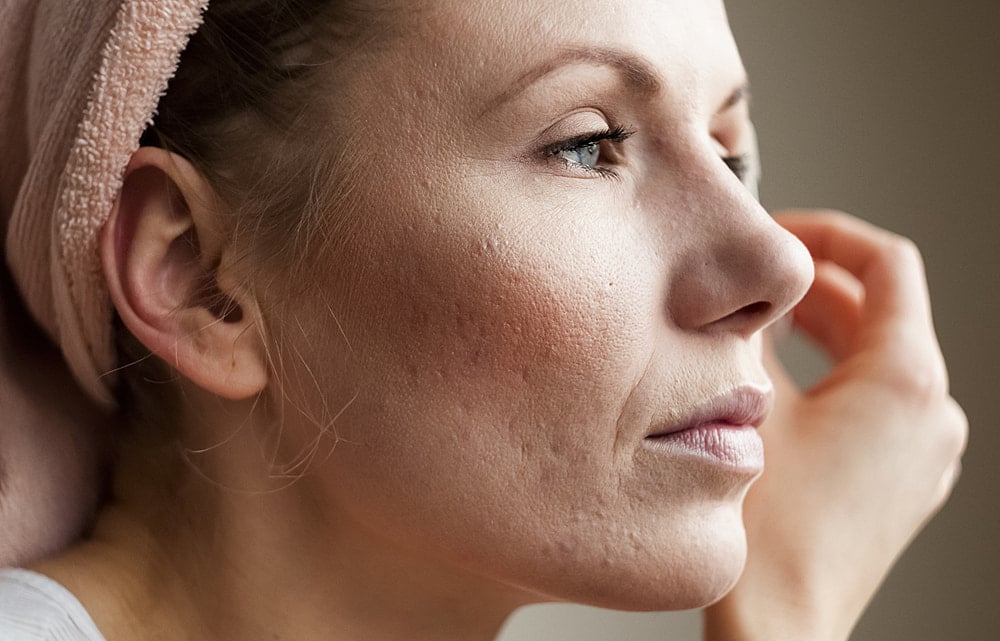
Dr Eva Teh: How to Prevent Breakouts on Acne Scarred Skin
- March 26, 2024
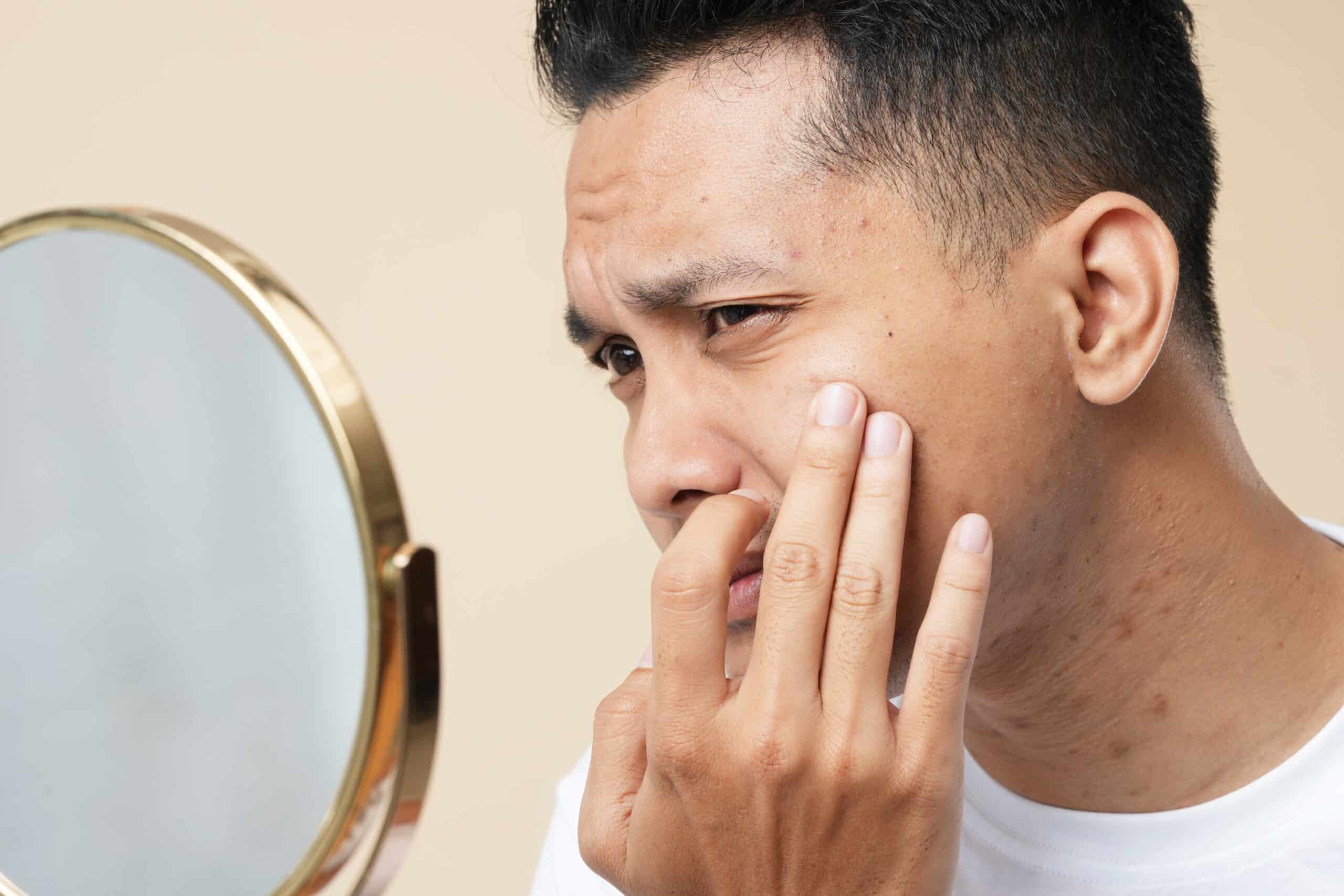

If you’ve battled acne, you’re likely familiar with the frustration of seeing new acne forming. It can be especially disheartening when these acne appear in spots that had already been marred by acne before.
You’re not alone, and there are reasons behind this phenomenon. In this blog post, we’ll explore why and how new acne develops under old acne scars and what you can do to manage and prevent this. We will also share some treatments you can explore to remove acne scars.
Before learning the reasons behind acne forming under old scars, let’s briefly understand how acne scars develop in the first place.
Acne scars result from the body’s attempt to heal and repair the skin after a severe acne breakout. The body’s natural healing process kicks in when the skin is subjected to inflammation and tissue damage caused by acne lesions. Acne scars are of two types.
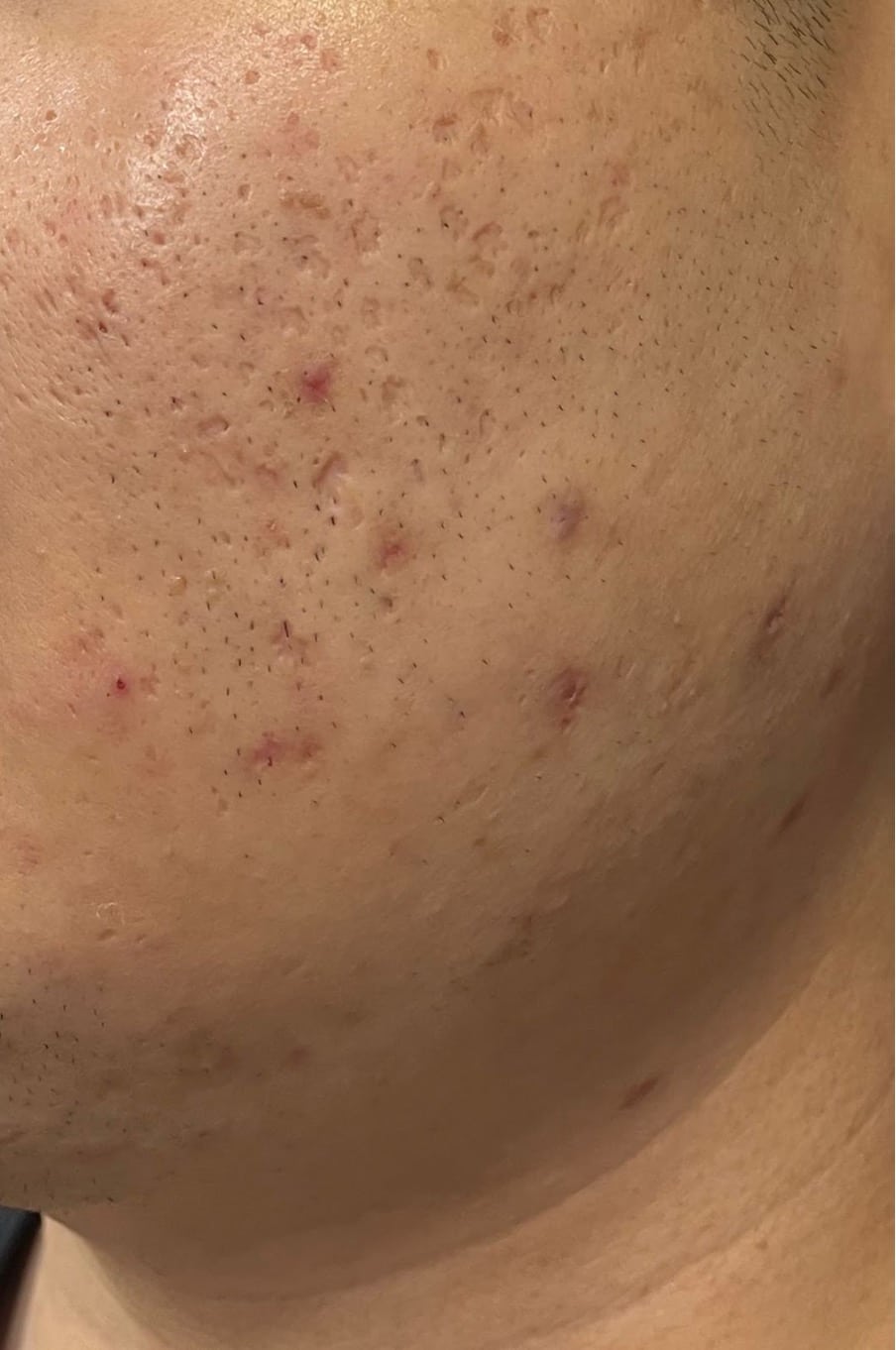
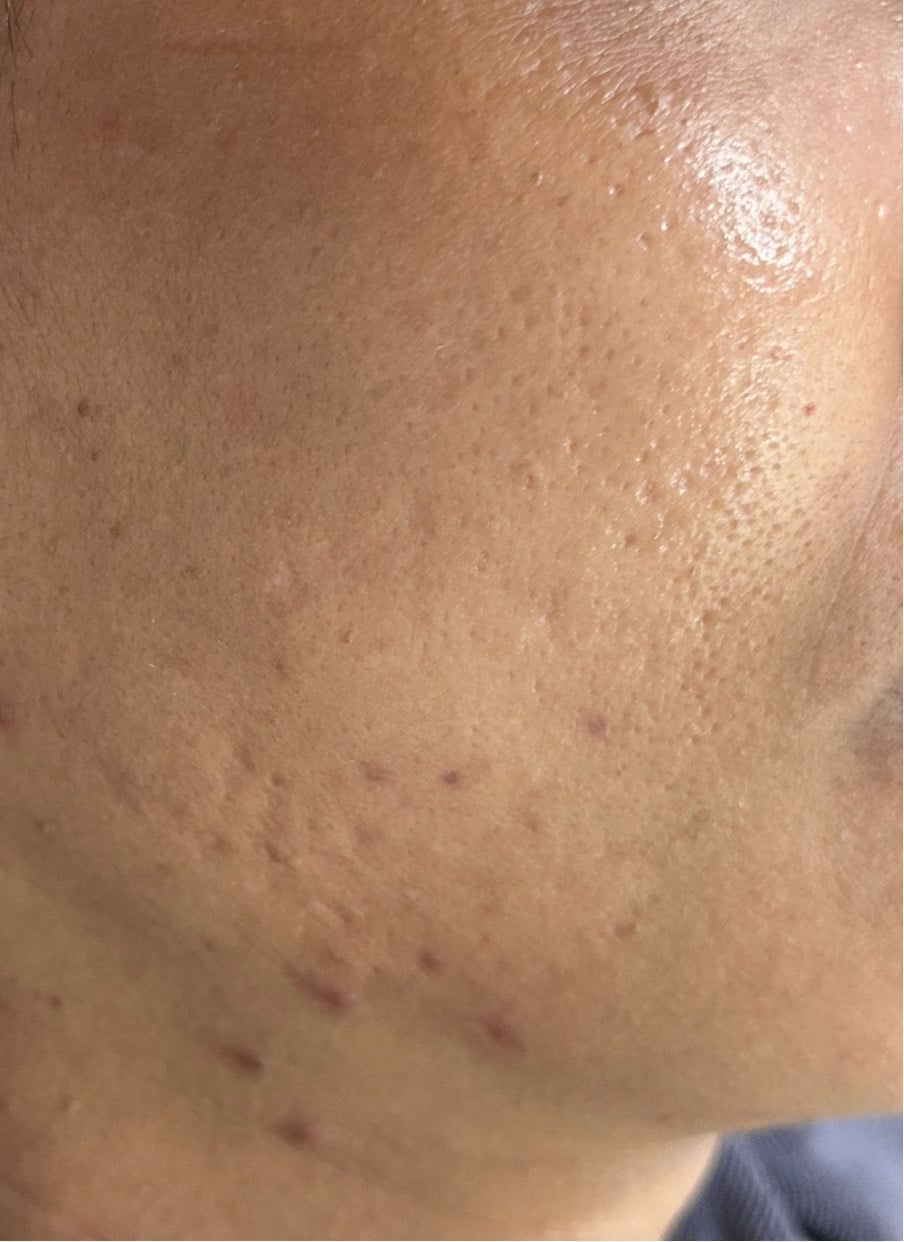
These acne scars are depressions in the skin, commonly called “icepick” or “boxcar” scars. They occur when the body doesn’t produce enough collagen during the healing process, leading to a loss of skin tissue.
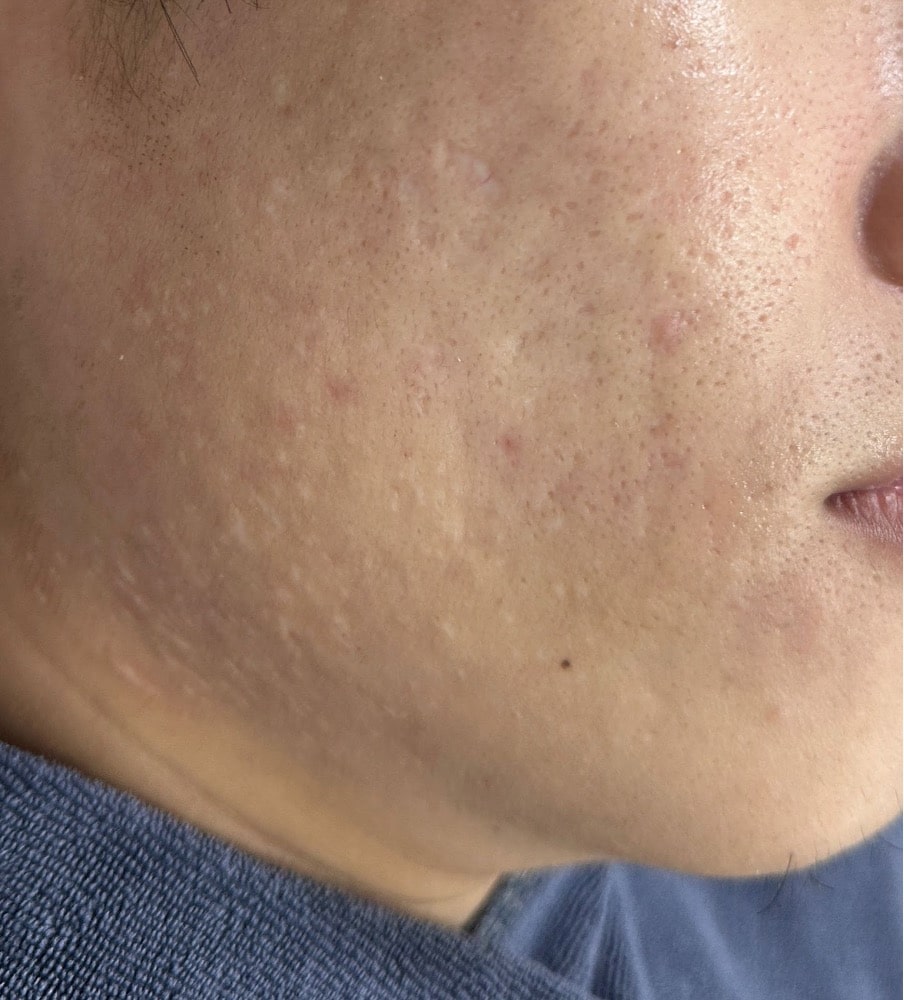
Unlike atrophic scars, hypertrophic scars are raised when the body produces too much collagen during healing.
Now that we understand the basics of acne scars let’s explore why acne forms under these scars.
One of the primary reasons acne can form under old acne scars is the uneven texture of scarred skin. Acne-prone skin tends to have pores more easily congested with dead skin cells, excess oil, and bacteria.
When these substances get trapped in the uneven surface of a scar, it creates a fertile ground for new acne to develop. Regular exfoliation and a proper skincare routine can help mitigate this issue.
Scar tissue is often more sensitive and prone to inflammation than normal skin. Even minor irritations, like friction from clothing or excessive sun exposure, can trigger an inflammatory response in scarred areas.
Inflammation can then lead to the development of new acne lesions. Using products with anti-inflammatory ingredients can help manage this sensitivity.
Hormonal fluctuations play a significant role in acne development. When your hormone levels fluctuate, particularly during menstruation, pregnancy, or periods of high stress, it can trigger the sebaceous glands to overproduce oil.
This excess oil can quickly become trapped under scar tissue, leading to new acne breakouts.
Propionibacterium acnes (P. acnes) is a common resident on our skin. While it’s typically harmless, when it becomes trapped under scar tissue, it can multiply and cause infection.
This bacterial overgrowth can trigger inflammation and result in new acne breakouts. Maintaining good hygiene and using antibacterial products can help prevent this.
Sometimes, the healing process beneath the scarred area might have been incomplete. It can leave behind pockets of damaged tissue more susceptible to acne formation.
Additionally, scars often have reduced blood circulation, making it harder for the body to fight infections and heal properly.
Genetics can also explain why new acne forms under old scars. If you have a genetic predisposition to acne, these tendencies can persist in the areas where you’ve had previous breakouts and scarring.
While you can’t change your genetics, you can manage and prevent acne by addressing the other factors mentioned here.
Now that we’ve explored why acne may form under old scars let’s discuss practical steps you can take to manage and prevent it.
1. Cleansing
Use a gentle, non-comedogenic cleanser to clean scar-prone areas twice daily. Avoid harsh scrubs or abrasive cleaners, as they can worsen scarring.
2. Exfoliation
Incorporate mild exfoliants like salicylic or glycolic acid into your routine to help prevent clogged pores. Exfoliate at most 2-3 times a week.
3. Moisturise
Keep scarred areas well-hydrated with a non-comedogenic moisturiser. Overproduction of oil is less likely to occur on hydrated skin.
1. Retinoids
Prescription or over-the-counter retinoids can help refine skin texture, diminish the appearance of scars, and prevent new acne breakouts. If you tend to get more severe acne breakouts, prescription retinoids might be a better fit. Aklief is a topical retinoid we prescribe to soothe inflammation and prevent the formation of new acne.
2. Topical Antibiotics
If bacterial infection is a concern, your doctor may prescribe topical antibiotics to keep the bacteria in check.
3. Azelaic Acid
This ingredient has anti-inflammatory and antibacterial properties, effectively preventing acne formation.
Practise consistent skincare
Stick to your skincare routine consistently to maintain healthy skin.
Protect your skin
Use sunscreen daily to prevent further damage from UV rays, which can worsen scarring.
Hydrate sufficiently
Drink at least 2 litres of water to keep your skin hydrated and prevent excess oil production.
Pick at scars
Avoid picking, squeezing, or scratching at acne scars, as this can worsen scarring and lead to infection.
Use harsh products
Avoid harsh chemicals and aggressive treatments that irritate the skin.
Neglect professional advice
Consult a doctor for personalised acne treatment options for severe acne and scarring.
If you’re struggling with both acne and acne scars, you can consider various treatment options. If a patient has both active acne and acne scars; we aim to initiate acne treatment such as acne lasers and medications to effectively control the acne so that they do not create further skin damage and scarring. Once the acne situation is dealt with, we can start acne scar treatments targeted specifically to the different types of acne scars.
According to research, acne scars respond best to a synergy of treatments.
Fractional CO2 laser treatment is effective for both atrophic and hypertrophic acne scars. It offers a precise and controlled approach to scar removal while minimising damage to the surrounding skin.
Also Read: Laser Treatments to Remove Acne Scars
RF microneedling is known for its ability to target deep scars and improve skin tightness. The controlled energy delivery ensures precise acne scar treatment and is suitable for various skin types.
Subcision is effective for addressing deep rolling acne scars and can be performed as a standalone treatment or in conjunction with other scar removal methods.
TCA cross is particularly effective for treating icepick and boxcar acne scars. It’s a precise and localised treatment, making it suitable for scars that are isolated or scattered.
The emergence of acne under old scars is not uncommon. Understanding the reasons behind it and adopting a proactive skincare routine can go a long way in managing and preventing acne breakouts in scar-prone areas.
If you seek professional help for acne scar removal in Singapore, consider acne scar treatments at SL Aesthetic Clinic. Our experienced team of aestheticians can assess your skin and recommend the most suitable treatment for your skin type and acne scar severity
Like what you read? Share them!